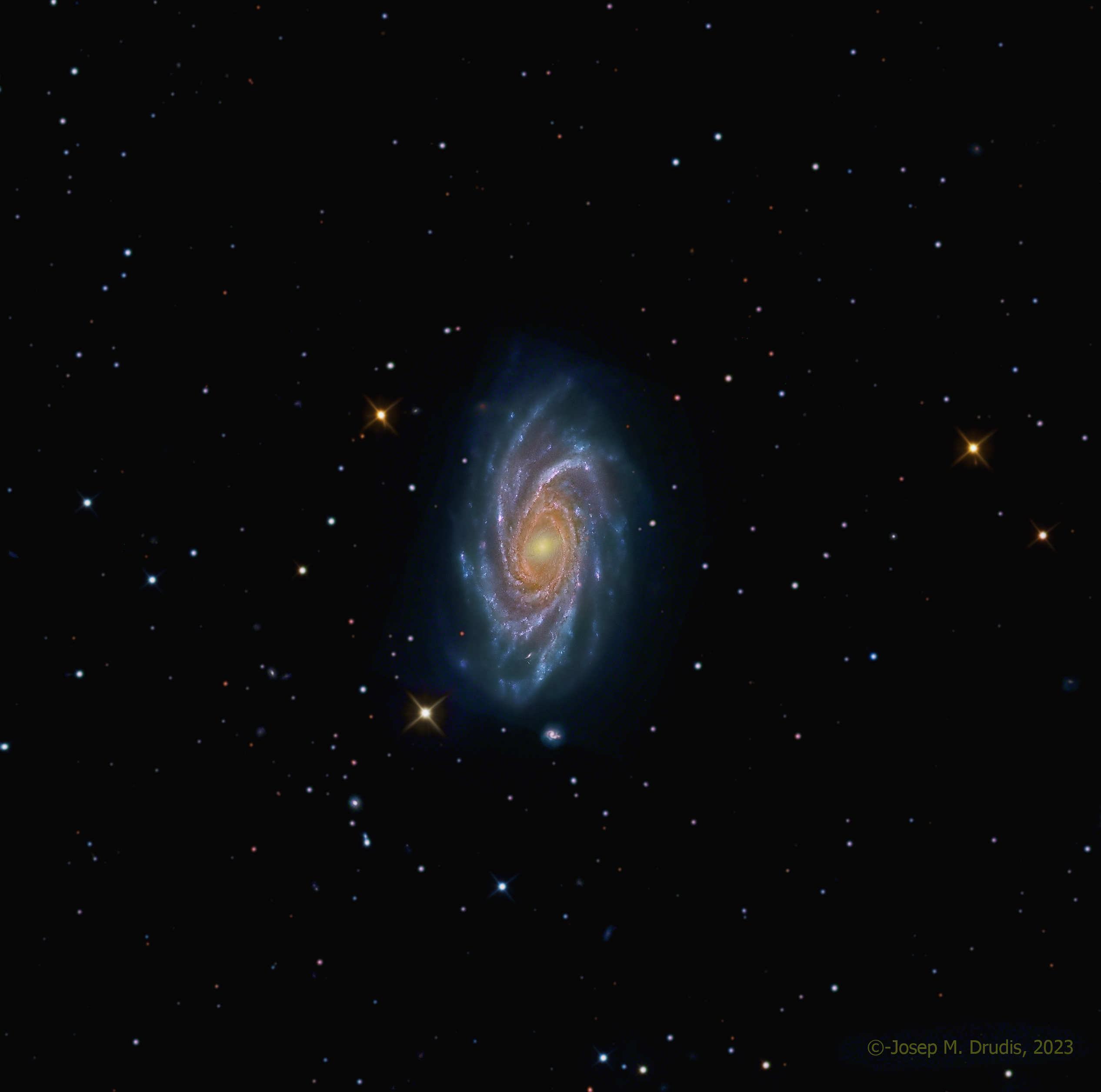Click on the image for a full resolution version
NGC 2336 is a spiral galaxy located in the northern constellation Camelopardalis, approximately 91 million light-years away from Earth. Discovered by astronomer William Herschel in 1785, this galaxy has since become a subject of significant scientific interest due to the size and activity level of its star formation HII regions.
One of the distinguishing features of NGC 2336 is its grand design spiral structure, characterized by nine well-defined spiral arms that extend from a prominent central bulge. These arms are studded with bright regions of active star formation, where massive young stars are born from the gravitational collapse of dense molecular clouds. The interplay of these massive stars with the Hydrogen, Nitrogen, Oxygen and Sulfur-rich surrounding gas and dust gives rise to intricate patterns and structures within the galaxy.
Observations of NGC 2336 across multiple wavelengths, from radio to X-ray, have provided valuable insights into its composition and dynamics. The star-forming nebulae in NGC 2336 were thoroughly studied by Gusev et al., in 2012 and, in 2018, Rahna et al. determined the star formation rate in these regions at about one solar mass every 1000 years. The star formation is, like in most galaxies, drive by the spiral density wave. The presence of intense radio emission indicates the existence of cosmic rays and magnetic fields, while X-ray studies reveal regions of hot gas associated with supernova remnants and other energetic phenomena.
The small galaxy below NGC 2336 is LEDA 213387, located much farther away.
Additional Information
Object
Name(s): NGC 2336
Type: Spiral Galaxy
RA: 07h 26m 59.9s
Dec: +80º 10’ 37”
Constellation: Camelopardalis
Size (arcmin): 7.1×3.9 arcmin
Magnitude: +10.4
Distance: 91 MLy
Image
Date: 2022-02-10 to 2022-03-23
Location: Curiosity2 Observatory, New Mexico Skies, Mayhill, NM, USA
Size (arcmin): 20 x 20 arcmin
Telescope: 24” (61 cm) f/6.5 Reflector
Camera: FLI PL16803 (4096x4096pix)
Guiding: Astrodon MonsterMOAG off-axis guider
Total exposure: 27h 25 m (L: 5h; RGB: 9h 45m; Ha: 12h 40m)
Processing: CCDStack, PixInsight (one step) and Photoshop CC 2023

